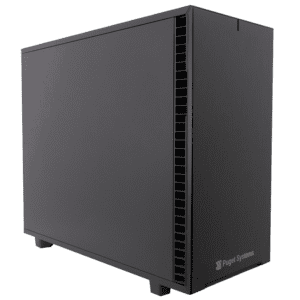In this post I’ll be going over details of Installing Ubuntu 18.04 including the NVIDIA display driver and, any one of the available desktop environments. I’ll do this starting from a base server install. I’ll go over a few possible pitfalls and end with a short discussion on the new netplan configuration tool for Ubuntu networking.
Install TensorFlow with GPU Support on Windows 10 (without a full CUDA install)
In this post I’ll walk you through the best way I have found so far to get a good TensorFlow work environment on Windows 10 including GPU acceleration. I’ll go through how to install just the needed libraries (DLL’s) from CUDA 9.0 and cuDNN 7.0 to support TensorFlow 1.8. I’ll also go through setting up Anaconda Python and create an environment for TensorFlow and how to make that available for use with Jupyter notebook. As a “non-trivial” example of using this setup we’ll go through training LeNet-5 with Keras using TensorFlow with GPU acceleration. We’ll get a setup that is 18 times faster than using the CPU alone.
Multi-GPU scaling with Titan V and TensorFlow on a 4 GPU Workstation
I have been qualifying a 4 GPU workstation for Machine Learning and HPC use. The last confirmation testing I wanted to do was running it with TensorFlow benchmarks on 4 NVIDIA Titan V GPU’s. I have that systems up and running and the multi-GPU scaling looks very good.
GPU Memory Size and Deep Learning Performance (batch size) 12GB vs 32GB — 1080Ti vs Titan V vs GV100
Batch size is an important hyper-parameter for Deep Learning model training. When using GPU accelerated frameworks for your models the amount of memory available on the GPU is a limiting factor. In this post I look at the effect of setting the batch size for a few CNN’s running with TensorFlow on 1080Ti and Titan V with 12GB memory, and GV100 with 32GB memory.
NVIDIA Titan V plus Tensor-cores Considerations and Testing of FP16 for Deep Learning
Tensor-cores are one of the compelling new features of the NVIDIA Volta architecture. In this post I discuss the some thought on mixed precision and FP16 related to Tensor-cores. I have some performance results for large convolution neural network training that makes a good argument for trying to use them. Performance looks very good.
GTC 2018 Impressions
NVIDIA’s Graphics Technology Conference (GTC) is probably my all-time favorite conference. It’s an interesting blend of “Scientific Research meeting” and Trade-Show. It’s put on by a hardware vendor but still feels like a scientific meeting. It’s not just a “Kool-Aid” fest! In this post I go present some of my thoughts about this years conference.
NAMD Performance on Xeon-Scalable 8180 and 8 GTX 1080Ti GPUs
This post will look at the molecular dynamics program, NAMD. NAMD has good GPU acceleration but is heavily dependent on CPU performance as well. It achieves best performance when there is a proper balance between CPU and GPU. The system under test has 2 Xeon 8180 28-core CPU’s. That’s the current top of the line Intel processor. We’ll see how many GPU’s we can add to those Xeon 8180 CPU’s to get optimal CPU/GPU compute balance with NAMD.
TensorFlow Scaling on 8 1080Ti GPUs – Billion Words Benchmark with LSTM on a Docker Workstation Configuration
In this post I present some Multi-GPU scaling tests running TensorFlow on a very nice system with 8 1080Ti GPU’s. I use the Docker Workstation setup that I have recently written about. The job I ran for this testing was the “Billion Words Benchmark” using an LSTM model. Results were very good and better than expected.
How-To Setup NVIDIA Docker and NGC Registry on your Workstation – Part 5 Docker Performance and Resource Tuning
This should be the last post in this series dealing with the Docker setup for accessing the NVIDIA NCG Docker registry on your workstation. There are a couple of configuration tuning changes that you may want to make. These will improve performance and ensure that you have proper system “user limit” resources to handle large application and job runs with docker.
How-To Setup NVIDIA Docker and NGC Registry on your Workstation – Part 4 Accessing the NGC Registry
This post will go through how to get access to the NVIDIA NGC container registry on your workstation. The first 3 posts in this series gave instructions on how to install and configure a base Ubuntu 16.04 workstation system with Docker and NVIDIA-Docker for a usable work-flow. With that taken care of we can get setup to use the many useful docker images in the NGC container registry for your local system.
